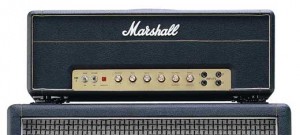Ravi Shankar, who died on Tuesday will always be remembered for his virtuous sitar playing. As well, his influence to the pop world in the ’60s was quite notable on the playing and tone of some of the best guitarists including George Harrison, Jimi Hendrix, Jerry Garcia, and Robbie Krieger.
In 1967, Ravi Shankar was invited to the Monterey Pop Festival to play an afternoon raga. In the audience, Jimi Hendrix watched with concentration. Ravi’s exotic indian scales were coupled with his ability to create peace and oneness in the listener. In much of Hendrix’s later work, you can hear this influence of indian scales. There are even jams that Hendrix later recorded that featured sitars and tanpuras (an indian drone instrument).
If you look at Robbie Krieger of The Doors, there is lots of indian influence. This is most notable in the song The End. His solos have a very indian feel, along with the song having a 4-note mantra which repeats throughout in the composition, much like that of indian classical music. He even makes his guitar create sitar-like sounds in the way he bends notes.
With Jerry Garcia, he was a very experimental player who often mixed up blues, country, bluegrass, spanish guitar, and indian classical into a melodic transcending experience. According to Rolling Stone, he was also influenced by Ravi Shankar.
And of course I don’t even have to say how much Ravi influenced George Harrison. He even became his Guru in teaching him the sitar. George incorporated sitar playing on many well-known Beatles tracks such as Norwegian Wood, Love you to, and Within You Without You. The influence continues on other songs of his like The Inner Light and Krishna Gopala. George and Ravi collaborated on many projects over the years as well.
While Ravi Shankar may not have been the only indian influence to music in the west, he was certainly the one who brought it there. Not just Monterey, he also performed at Woodstock in 1969, and the Concert for Bangladesh in 1971. His own music was so breath-taking and spiritual that it is oddly familiar to even those furthest away from indian classical music. May his music, love, and spirit always live on. Without a doubt, he was one of the most influential musicians of all time.
 Amps
Amps Pedals
Pedals